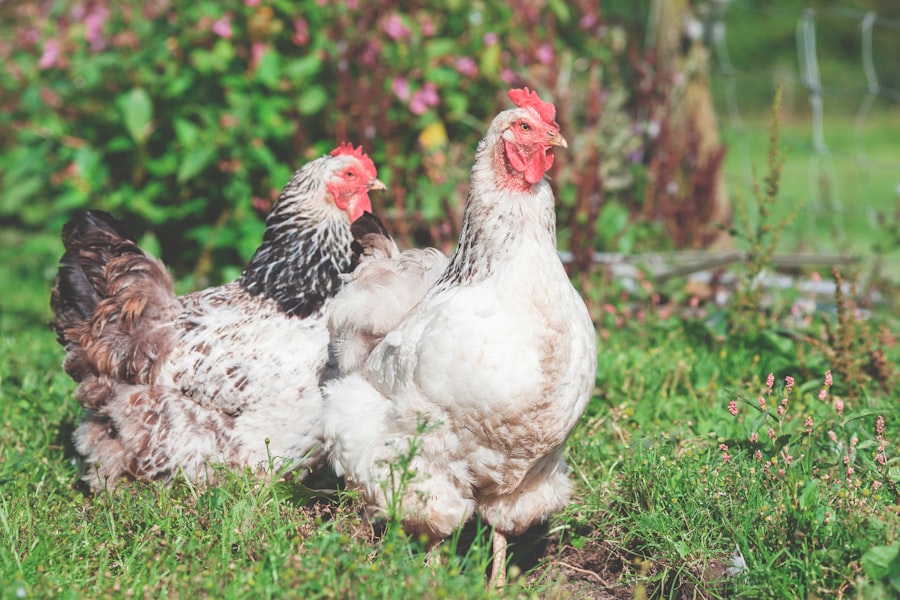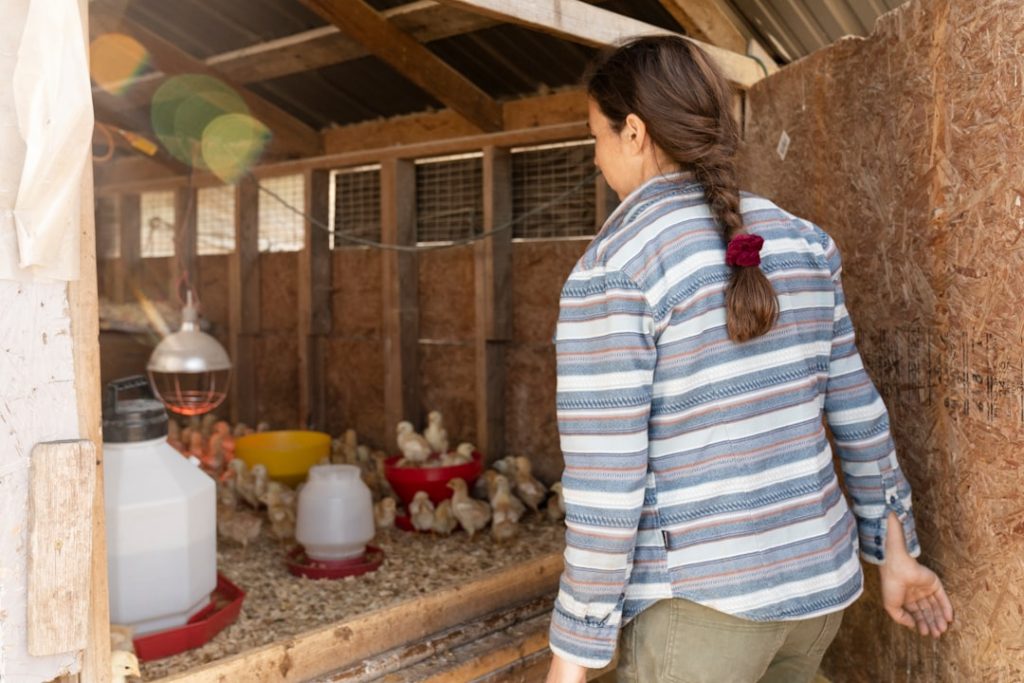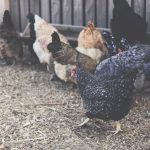Silkie chickens are an ancient breed originating in China, where they were valued for their unique appearance and gentle nature. Their exact origins are unclear, but they are thought to have been introduced to the West by Marco Polo in the 13th century. Initially known as “Chinese silk chickens” due to their soft, fluffy feathers, Silkies were also prized for their black skin and bones, which were believed to have medicinal properties in traditional Chinese medicine.
Silkies were introduced to the United States in the 19th century and quickly gained popularity as ornamental birds. The American Poultry Association officially recognized them in 1874. Today, Silkies are kept for their distinctive appearance, broodiness, and ability to hatch and raise chicks from other breeds.
They are popular in backyard flocks due to their docile nature and adaptability to confined spaces. In Chinese folklore, Silkies are associated with good luck and prosperity, and are believed to possess magical powers that bring happiness and fortune. In Western culture, they have appeared in literature, art, and children’s stories.
The rich history and cultural significance of Silkies have contributed to their enduring popularity among poultry enthusiasts worldwide.
Table of Contents
Key Takeaways
- Silkies chickens originated in China and were first mentioned in Western literature in the 13th century.
- They are known for their unique appearance, with fluffy feathers, black skin, and blue earlobes.
- When selecting breeding stock for Silkies chickens, look for birds with good overall health, correct feather color, and a calm temperament.
- Breeding Silkies chickens requires careful attention to genetics, as certain traits like feather color and comb type are controlled by specific genes.
- Incubating and hatching Silkies chicken eggs requires a consistent temperature and humidity, as well as regular turning of the eggs.
- Caring for Silkies chicks involves providing a warm and safe environment, as well as a balanced diet and regular health checks.
- Selling and marketing Silkies chickens can be done through online platforms, local poultry shows, and networking with other chicken enthusiasts.
Characteristics and Appearance of Silkies Chickens
Distinctive Appearance
Their fluffy plumage, which feels like silk or satin to the touch, is a hallmark of the breed. Add to that their black skin and bones, turquoise earlobes, and five toes on each foot (most chickens have four), and you have a truly one-of-a-kind appearance. The crowning glory of the Silkie’s appearance is their distinctive crest of feathers on top of their heads, giving them a regal and elegant air.
Gentle Nature
But it’s not just their looks that make Silkies special – they’re also known for their gentle and friendly nature. Docile and easily handled, they’re an excellent choice for families with children or first-time chicken keepers. Their calm demeanor makes them a joy to be around, and they’re often described as “lap chickens” due to their affectionate nature.
Unique Characteristics
Silkies are also prized for their broodiness, meaning they have a strong instinct to sit on eggs and hatch chicks. This makes them valuable for hatching eggs from other breeds or raising chicks that may have been abandoned by their mother. They come in a variety of colors, including white, black, blue, buff, partridge, and splash, and are available in both standard and bantam sizes. The bantam variety is particularly popular due to its smaller size and adorable appearance.
Selecting Breeding Stock for Silkies Chickens

When selecting breeding stock for Silkies chickens, it is important to consider several key factors to ensure the health, vitality, and genetic diversity of the flock. One of the most important considerations is the overall conformation and appearance of the birds. Breeding stock should exhibit the standard characteristics of the breed, including a well-defined crest, five toes on each foot, black skin and bones, and a soft, fluffy plumage that feels like silk.
It is also important to select birds with good temperament and a friendly disposition, as these traits are often passed down to their offspring. In addition to appearance and temperament, it is crucial to consider the genetic diversity of the breeding stock. Inbreeding can lead to genetic defects and health problems in the offspring, so it is important to introduce new bloodlines into the flock periodically.
This can be achieved by purchasing birds from reputable breeders or attending poultry shows and auctions to acquire new breeding stock. By maintaining genetic diversity within the flock, breeders can help ensure the long-term health and vitality of their Silkies chickens. Another important consideration when selecting breeding stock is the overall health and vigor of the birds.
It is essential to choose birds that are free from any signs of illness or disease, as these can be passed down to future generations. Regular health checks and vaccinations can help maintain the overall well-being of the breeding stock and reduce the risk of transmitting diseases to the offspring. By carefully selecting breeding stock based on appearance, temperament, genetic diversity, and overall health, breeders can help maintain the quality and vitality of their Silkies flock for generations to come.
Breeding Silkies Chickens: Tips and Techniques
Breeding Silkies chickens requires careful planning, attention to detail, and a thorough understanding of the breed’s unique characteristics. One of the most important considerations when breeding Silkies is ensuring genetic diversity within the flock. As mentioned earlier, inbreeding can lead to genetic defects and health problems in the offspring, so it is crucial to introduce new bloodlines into the flock periodically.
This can be achieved by acquiring birds from reputable breeders or attending poultry shows and auctions to add new breeding stock to the flock. Another key aspect of breeding Silkies is selecting compatible mating pairs. It is important to pair birds that complement each other in terms of conformation, temperament, and overall health.
By carefully selecting mating pairs based on these criteria, breeders can help ensure that the offspring inherit desirable traits from both parents. It is also important to monitor the mating process closely to ensure that all birds are mating successfully and that any potential issues are addressed promptly. In addition to selecting compatible mating pairs, breeders should also pay attention to the timing of breeding activities.
Silkies are known for their broodiness and make excellent mothers, so it is important to provide them with a suitable environment for nesting and hatching eggs. By providing nesting boxes filled with straw or shavings in a quiet and secluded area, breeders can encourage broody hens to sit on eggs and hatch chicks successfully. Overall, breeding Silkies chickens requires careful planning, attention to detail, and a commitment to maintaining genetic diversity within the flock.
Incubating and Hatching Silkies Chicken Eggs
Incubating and hatching Silkies chicken eggs is an exciting process that requires careful attention to temperature, humidity, and turning of the eggs. When incubating eggs, it is important to maintain a consistent temperature of around 99-100 degrees Fahrenheit and a humidity level of around 50-55%. This can be achieved using a reliable incubator with automatic temperature and humidity controls or by manually monitoring these factors throughout the incubation period.
In addition to temperature and humidity control, it is crucial to turn the eggs regularly during incubation to prevent the embryos from sticking to the shell membrane. This can be done by gently rotating the eggs several times a day using an egg turner or by hand. Turning the eggs helps ensure proper development of the embryos and increases the likelihood of successful hatching.
Once the eggs have completed the incubation period (usually around 21 days for chicken eggs), it is time for hatching to begin. During this stage, it is important to maintain high humidity levels (around 65-70%) to help soften the eggshells and facilitate hatching. It is also crucial to provide a quiet and undisturbed environment for the hatching process to unfold naturally.
Overall, incubating and hatching Silkies chicken eggs requires careful attention to temperature, humidity, turning of the eggs, and providing a suitable environment for hatching. By following these guidelines, breeders can increase the likelihood of successful hatching and enjoy watching adorable Silkies chicks emerge from their eggs.
Caring for Silkies Chicks

Temperature Control
A brooder lamp or heating pad set at around 95 degrees Fahrenheit is ideal for the first week of life. The temperature can then be gradually decreased by 5 degrees each week until it reaches room temperature.
In addition to maintaining proper temperatures, it is essential to provide chicks with access to clean water and high-quality chick starter feed formulated specifically for their nutritional needs. Monitoring their behavior closely for any signs of illness or distress and addressing any issues promptly is also vital.
Nutrition and Hydration
Providing clean water and high-quality chick starter feed is crucial for the healthy growth and development of Silkie chicks. The feed should be formulated specifically for their nutritional needs, and their behavior should be monitored closely for any signs of illness or distress.
Space and Exercise
As Silkie chicks grow, they need ample space to move around and exercise. This can be achieved by gradually increasing the size of their brooder area or by transitioning them to a suitable outdoor coop once they are old enough. Providing enough space for them to move around is essential for their overall health and well-being.
By paying attention to these specific needs, you can help ensure the healthy growth and development of your Silkie chicks.
Selling and Marketing Silkies Chickens
Selling and marketing Silkies chickens can be an exciting opportunity for breeders who want to share these unique birds with others who appreciate their distinctive characteristics. One effective way to market Silkies chickens is by participating in poultry shows and fairs where breeders can showcase their birds’ unique appearance and desirable traits. This can help attract potential buyers who are interested in adding Silkies to their flocks.
Another effective marketing strategy is creating an online presence through social media platforms or dedicated websites where breeders can showcase their birds’ unique qualities through photos, videos, and informative content about the breed’s history, characteristics, and care requirements. This can help reach a wider audience of potential buyers who may be interested in purchasing Silkies chickens. When selling Silkies chickens, it is important to provide potential buyers with accurate information about the birds’ lineage, health history, and any special care requirements they may have.
This can help build trust with buyers and ensure that they are well-informed about what to expect when adding Silkies to their flocks. Overall, selling and marketing Silkies chickens requires effective promotion through poultry shows, fairs, online platforms, providing accurate information about the birds’ lineage and care requirements, and building trust with potential buyers who appreciate these unique birds’ distinctive qualities.
If you’re interested in breeding silkies chickens, you may also want to consider the benefits of providing a chicken coop trampoline for your flock. This article from Poultry Wizard discusses how adding a trampoline to your chicken coop can provide entertainment and exercise for your chickens, leading to happier and healthier birds. Check it out here.
FAQs
What are Silkie chickens?
Silkie chickens are a unique breed of chicken known for their fluffy plumage, gentle temperament, and distinctive black skin and bones. They are often kept as pets and are popular for their ornamental appearance.
How do you breed Silkie chickens?
To breed Silkie chickens, you will need a rooster and hens of the Silkie breed. The rooster will mate with the hens, and the hens will lay fertilized eggs. The eggs can then be incubated for 21 days until they hatch into chicks.
What are the characteristics of Silkie chicken eggs?
Silkie chicken eggs are typically small to medium in size and have a light brown or tinted shell. They are known for their delicate and creamy texture, making them a popular choice for baking and cooking.
What is the incubation period for Silkie chicken eggs?
The incubation period for Silkie chicken eggs is approximately 21 days. During this time, the eggs should be kept in a warm and humid environment to ensure successful hatching.
What should I consider before breeding Silkie chickens?
Before breeding Silkie chickens, it is important to consider the space and resources needed to care for the chicks once they hatch. Additionally, it is important to ensure that the breeding process is ethical and that the chickens are well-cared for throughout the process.
Meet Walter, the feathered-friend fanatic of Florida! Nestled in the sunshine state, Walter struts through life with his feathered companions, clucking his way to happiness. With a coop that’s fancier than a five-star hotel, he’s the Don Juan of the chicken world. When he’s not teaching his hens to do the cha-cha, you’ll find him in a heated debate with his prized rooster, Sir Clucks-a-Lot. Walter’s poultry passion is no yolk; he’s the sunny-side-up guy you never knew you needed in your flock of friends!







